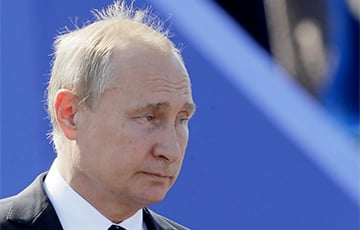The National Interest: HIMARS On Putin's Doorstep
6- 10.05.2025, 8:07
- 15,030

Estonia will receive six new U.S. installations.
Six U.S. HIMARS multiple rocket launchers have arrived in Estonia - right on Russia's doorstep, according to The National Interest (translated by Charter97.org). This is not just a defense enhancement for one of NATO's most vulnerable allies - it is a clear signal of strategic change in the Baltic region.
The HIMARS deliveries are part of a $200 million contract signed between Estonia and the U.S. Department of Defense's Defense Security Cooperation Agency (DSCA) in December 2022. Estonia will also receive missiles with a range of up to 400 kilometers, communications, training and technical support. The delivery was carried out by a Ukrainian An-124 carrier and was an important logistical operation.
Major General Indrek Sirel, commander of the Estonian Division, noted that training has already begun: "The arrival of HIMARS gives us the opportunity to perform division-level tasks. Thanks to the American calculations already in the country, our soldiers have received training and are ready to form their own units."
The Estonian Air Force base in Emari, recently modernized for NATO, has received the new missile launchers. Joint firing exercises with U.S. participation are expected in the third quarter of this year.
Estonian Defense Minister Hanno Pevkur stressed that "this deal opens a new era for Estonia's independent defense."
Despite the skepticism of some politicians in the U.S., Estonia already spends more than 3% of GDP on defense and plans to raise that figure to 5.4%.
With the ability to quickly deploy and launch, HIMARS becomes not only a deterrent weapon, but also a trump card in the event of a real threat. And on the border with Russia, as history shows, calm is not a constant.
Why Russia's armored vehicles are vulnerable
The Abrams and Challenger 3 tanks demonstrate superiority to the Russian army.
Fundamental differences in the tank-building philosophies of the West and Russia were clearly demonstrated on the battlefields of Ukraine, writes 19FortyFive (translated by Charter97.org).
Modern NATO tanks, such as the American M1 Abrams, British Challenger 3 and German Leopard 2, are designed with a priority on crew protection, technological superiority and survivability. In contrast, Soviet-school Russian tanks, including the T-72, T-80, and T-90, still emphasize quantity and firepower - often at the expense of crew safety.
A typical example is the Leopard 2A4, which reportedly survived up to ten Russian FPV drone strikes in Ukraine, including ammunition detonation. Despite the damage, the tank was evacuated and is recoverable - something that is unlikely for Russian vehicles, where ammunition detonation often leads to the complete destruction of the tank and the death of the crew.
Western tanks have isolated ammunition with knockout panels, active defense systems, digital communications, and advanced target detection systems. Russian vehicles, despite the presence of dynamic protection such as Relikt or Kontakt-5, are much more likely to suffer from explosions inside the hull due to the placement of shells in the fighting compartment.
The difference in approach is obvious: the West relies on survivability, while Russia relies on quantity. But in modern conflicts, where every vehicle and every soldier counts, it is this "massiveness" that becomes the Achilles' heel of the Russian army.
The integration of modern Western tanks into the Ukrainian army is a signal that Russia's technological lag can no longer be hidden.











